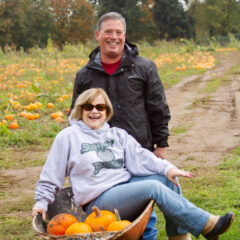Starting a lifestyle blog can open the door to sharing what you love, building a community, and maybe even earning a living. I’ve seen how a lifestyle blog can let your personality shine while helping others with inspiration, tips, or fresh ideas. But growing a blog that actually gets noticed and sticks around takes some planning and patience. If you’ve ever thought about taking the plunge, I’m here to walk you through the key steps for launching and growing your own lifestyle blog—no tech skills or fancy gear required.
This guide covers everything from picking your niche to staying motivated when things get rocky. Whether you want to blog about travel, wellness, home decor, or just your take on everyday life, you’ll come away with a practical step-by-step plan and answers to questions that pop up all the time.
Step 1: Pick the Right Lifestyle Niche
The term “lifestyle blog” can mean practically anything, which is why narrowing your focus makes a big difference. You want your blog to feel like it has a purpose, not just a random mix of topics. The trick is to choose something you’re passionate about and that people want to read.
Questions to help you choose:
- What do I love talking or reading about most?
- What experiences or knowledge do I have to share?
- Are people searching for advice or inspiration on this topic?
- Could I see myself writing about this in a year or two?
Popular lifestyle blog ideas:
- Travel stories and tips
- Wellness, self-care, or mental health
- Home styling or organization
- Food and recipes
- Personal finance and budgeting
- Minimalism and simple living
Your niche doesn’t have to be ultraspecific. You can mix a few related topics as long as you keep a clear vibe and voice across your blog. For instance, combining wellness and minimalist home design works well if both are genuinely interesting for you, and your audience likes both.
Step 2: Set Up Your Blog Platform
You don’t need to know how to code to start a blog! There are several platforms that make the tech side super manageable, even for beginners. WordPress.org is the most flexible (you’ll have to buy hosting, though), while options like Wix or Squarespace are good if you want easy draganddrop tools.
What you need to get started:
- Domain name, the web address for your blog. Try to keep it short, catchy, and easy to remember.
- Hosting plan, where your blog lives online. Sites like Bluehost, SiteGround, or DreamHost are solid picks for beginners.
- Theme or design template. Pick something clean and mobilefriendly. Don’t spend ages tweaking design, focus on content first!
Once you sign up, it’s smart to add an “About” page, your first blog post, and a few core pages such as Contact or Categories. I started with a weekly posting schedule, but you can go slower or faster; just find a rhythm that works for your life.
Remember, the technical part may feel tricky in the beginning, but most hosting companies have helpful guides, and there are tons of YouTube tutorials to check out. Don’t get trapped trying to make your site perfect before you share it—put it out there and tweak as you go!
– Turn your own Hobby/Niche website into revenue.
– Monetize content based on your interests and goals.
– Also monetize Social Media and YouTube.
– Step by step training, tools and support. Everything you need for success.
– Your own AI powered website.
– Try it FREE to see if the program is right for you. No credit card needed.
Step 3: Create Content That Connects
What makes a lifestyle blog stand out is the personal touch. People want to read stories, tips, and honest takes from real people, not just dry lists or recycled info. I mix up longer howto guides, shorter daily reflections, photo roundups, and even reviews now and then. Try to add your unique perspective to everything you post.
Types of posts that work well:
- Howto guides and tutorials
- Product or place reviews
- Photo diaries or visual inspiration
- Personal reflections and stories
- Lists of favorite resources or ideas
Consistency is really important for keeping readers coming back. I try to post at least once a week when I’m starting out, but the key is sticking to whatever schedule you pick. Use an editorial calendar (even just a Google Sheet) to plan ahead and organize ideas. Over time, you’ll stumble upon which post types get the best reactions, so keep an eye on what resonates!
Adding personal anecdotes can help your blog feel more inviting. Don’t worry if you don’t have fancy photography gear; phone photos work just fine as long as they’re clear and relevant to your story. It’s also a good idea to check out other blogs for formats or ideas if you feel stuck—just make sure to make the content uniquely yours.
Step 4: Grow Your Audience
Building readership can feel slow at first, but there are a bunch of things that help your blog gain traction. Don’t just wait for Google to find you, share your posts on places where your ideal readers spend time.
Smart ways to get the word out:
- Share posts on Instagram, Pinterest, or Facebook, wherever your target audience hangs out.
- Join blogging communities and leave thoughtful comments on other blogs (this helps you make friends and get noticed).
- Use basic SEO strategies: include relevant keywords in your post titles and headings, add meta descriptions, and link between your own posts.
- Offer a freebie (like a checklist or miniguide) in exchange for email signups. Email lets you connect with people directly and bring them back to your blog.
Guest posting on other blogs, joining group boards on Pinterest, or teaming up on social media projects can also attract new eyes to your content. Don’t be afraid to ask other bloggers about collaborations or feature swaps; a little support goes a long way.
Remember, growing an audience is usually gradual, but consistently sharing valuable content and showing up to interact can speed things up. If you have a particular skill, such as design or photography, that sets you apart, don’t hesitate to make it pop in your posts and social media presence.
Step 5: Monetize Your Lifestyle Blog
You won’t start making money overnight, but once you’ve built up good content and a regular audience, there are a few simple ways to earn a bit (or maybe a lot):
- Affiliate marketing: Recommend products you use and include special links. You’ll earn a percentage if someone buys through your link.
- Sponsored posts: Once you have some traffic, brands may pay to have their products featured in your posts or social media.
- Ad networks: Display ads from Google AdSense or Mediavine, and get paid for impressions or clicks.
- Digital goods: Sell printables, ebooks, or other digital resources related to your topic.
- Services or consultations: If you have skills in writing, photography, design, or coaching, your blog can help attract clients.
Focus on building trust and providing value before you jump into sponsored stuff or selling. Readers can easily spot when someone’s chasing a fast buck. If you stay authentic and only promote items you truly like, monetizing will feel smoother and your audience will stick around.
Step 6: Keep Your Blog Going (And Growing)
Most blogs don’t fail because the content is bad; they just get abandoned. Life gets busy, ideas dry up, or motivation fizzles. Sticking with it is super important if you want your blog to grow, even slowly. Here’s what’s helped me keep going:
- Batch writing posts ahead of time so you’re not scrambling every week.
- Checking in with readers through email or social for ideas and feedback.
- Updating older posts with fresh info or photos.
- Setting small, regular goals, like “publish once a week” or “grow email subscribers by 10%.”
Your blog might change over time, and that’s totally okay. Stay curious and keep learning about what your readers want. Take breaks when needed, but don’t give up on your creative adventure. Every blogger faces ups and downs—the trick is to adjust rather than quit.
Common Questions About Lifestyle Blogging
Are blogs still a thing in 2025?
Absolutely. While social media grabs a lot of attention, wellrun blogs are still super useful. They show up in Google searches, offer deeper content, and help you build a community you actually own (unlike fleeting social posts). Podcasts and video are great too, but blogs are far from gone.
What kind of lifestyle blogs are the most popular?
Popular lifestyle blogs often focus on real experiences. Think wellness adventures, travel stories, minimalist living, or budgetfriendly tips. Blogs mixing great visuals with practical advice do well. Home organization, ecofriendly living, and selfcare are especially trending right now.
What kind of blogs earn the most money?
Blogs about personal finance, parenting, health and wellness, and food often pull in strong income (mostly through affiliates and product sales). But even smaller lifestyle blogs make money if they solve problems, connect with the right audience, and build trust. Earning money is all about building genuine value and giving a boost to your readers.
What is the 80/20 rule for blogging?
This rule dictates that 80% of your content (blogs, social media posts, email newsletters, and so on) should focus on providing value to your audience through education, entertainment, or problem-solving. Meanwhile, only 20% of the content you share should be promotional.
Ready to Start Your Lifestyle Blog?
Building a lifestyle blog takes some work, but it’s super rewarding to see your community grow and know your content helps others. My action plan is simple: pick a niche, get your site set up, share personal and helpful posts, promote them, and stay with it even when progress feels slow. If you’re reading this, you’re already one step ahead—now it’s time to get started!
Your Checklist:
- Pick your niche and blog name; make it true to you
- Set up your blog platform and publish your first post
- Map out content ideas that your readers will love
- Share and connect with readers on social and email
Have questions about starting, growing, or making money from your blog? Ask them below, and I’ll help you out!
Here’s a little transparency: Our website contains affiliate links. If you click and make a purchase, we may receive a small commission. Don’t worry, there’s no extra cost to you.




